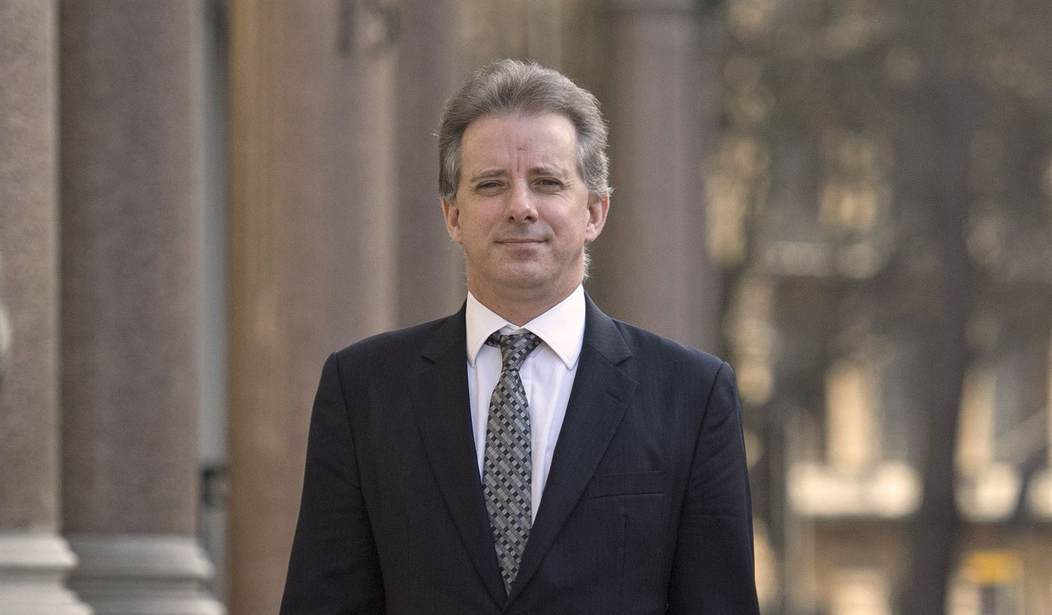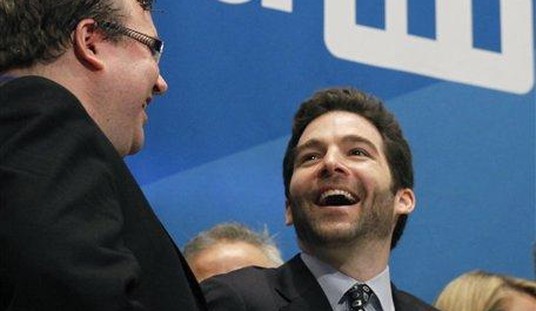Yesterday the NY Times published an article based on information from a forthcoming book titled “Spooked: The Trump Dossier, Black Cube and the Rise of Private Spies.” The article is focused on Fusion GPS and the Steele dossier and offers an overview of how unverified and ultimately unreliable tales became the biggest news story in the country and provided a lot of short term benefits for the people selling the story and the journalists who helped spread it.
Glenn Simpson and Peter Fritsch, the founders of Fusion GPS, wrote a book about the dossier that became a best seller. Mr. Steele sold his life rights to a Hollywood studio owned by George Clooney. When a guest at a private dinner party hosted by Vanity Fair asked him for his business card, he thought it was a fan who wanted his autograph, so he picked up his place card and signed it.
Now the glow has faded — from both the dossier and its promoters. Russia, as Mr. Steele asserted, did try to influence the 2016 election. But many of the dossier’s most explosive claims — like a salacious “pee” tape featuring Mr. Trump or a supposed meeting in Prague between Michael Cohen, Mr. Trump’s former attorney, and Russian operatives — have never materialized or have been proved false. The founders of Alfa Bank, a major Russian financial institution, are suing Fusion GPS, claiming the firm libeled them. (Fusion has denied the claims.) Plans for a film based on Mr. Steele’s adventures appear dead.
Glenn Simpson co-founded Fusion GPS to straddle a fuzzy border between journalistic oppo research and private intelligence. The piece quotes him as once describing the concept of his firm as “journalism for rent.” So when he was hired by the Clinton campaign to look into then-candidate Trump’s connections to Russia, they hired Steele and within a few months he produced the dossier.
The information was always intended to shape the 2016 election. So sometime before the election, Steele met with reporters from several major news outlets including the NY Times. In these meetings, Steele was presented to reporters as a credible former spy who’d played a role in “the 2006 poisoning of Alexander Litvinenko” and uncovering the FIFA bribery scandal. Had he actually done either of those things? There was really no clear way to check since whatever Steele had done for British intelligence was secret. But in retrospect, it appears those claims, like the dossier itself, were exaggerated.
The best friend of Mr. Litvinenko, the murdered ex-K.G.B. agent, said neither he nor Mr. Litvinenko’s wife had heard of Mr. Steele. Neither had a former Times reporter, Alan Cowell, who wrote a book about the Litvinenko case. Ken Bensinger, a BuzzFeed reporter who wrote a book about the FIFA scandal, said that after speaking with Mr. Steele, he concluded that Mr. Steele really didn’t know much about it.
In any case, at his meetings with journalists in the fall of 2016, Steele claimed he’d gathered his information from reliable but anonymous sources with connections to the Kremlin. Since those sources were never spelled out, there was no way for journalists to verify who they were or how reliable their information might be. The credibility of the sources all rested on the credibility of Steele vouching for them. At least that’s how it was in 2016. But eventually, years later, we learned about those sources.
The dossier’s latest blow came last year when the identity of Mr. Steele’s collector was revealed. He turned out to be a Russian-born lawyer, Igor Danchenko, who now lived in the United States. Mr. Danchenko, like others in the private intelligence business, had stumbled into it after other pursuits failed. His contacts within Russia appeared to be not Kremlin A-listers but instead childhood friends, college buddies or drinking pals.
In 2017, Mr. Danchenko claimed to the F.B.I. during a secret interview that Mr. Steele had “misstated” the information and had “exaggerated” its reliability. But after that interview was released in 2020, Mr. Danchenko flip-flopped. He told one newspaper that he stood by the dossier; he told another newspaper that he wasn’t so sure about it.
The result of all this poorly-sourced skullduggery is hard to overstate for those of us who lived through it all. The daily bombshells. The dueling memos. The frequent claims by Democrats that verification of the dossier existed or was just around the corner. The story became a political obsession for some. Proof that President Trump was essentially corrupt and had cheated his way into office. But in the piece published by the Times you get a kind of historical foreshortening effect where the impact of the dossier is reduced to a momentary fad.
After BuzzFeed posted the contents of the dossier in early 2017, countless articles, television shows, books, tweets and blog posts about it appeared. Then the music started to stop. Robert S. Mueller III, who led a Justice Department inquiry into possible collusion between the Trump campaign and Moscow, barely mentioned the dossier in his 2019 report. A separate review that year by the inspector general of the Justice Department, Michael E. Horowitz, also threw cold water on the dossier and raised the possibility that Russian agents might have fed disinformation to Mr. Steele’s sources, a suggestion the former British agent rejected.
The two years before the music started to stop was half of President Trump’s term in office. Progressives who still mock the significance and attention paid to Benghazi or questions about Hillary’s private server really have no reason to feel smug in light of their years of focus on the Steele dossier.
And the music still goes on to some degree. The piece ends by noting that a recent book by a reporter for the Guardian claimed that Steele sent Danchenko, his main “collector” of information, to have a clandestine meeting with Sergei Millian, a peripheral figure in the story. According to the book, they had long private chats in which Millian recognized Steele’s collector as a “kindred soul.” In reality, Danchenko told the FBI he’d never met Millian but said they might have spoken briefly on the phone.
That’s the difference between how the dossier was reported and how it was actually produced. The journalists who got it wrong benefitted from it and have little desire to look back and admit they were made fools of by an unreliable narrator spinning wild stories they desperately wanted to believe. And yet some journalists still wonder why their credibility with a large segment of the American population is shot.








Join the conversation as a VIP Member